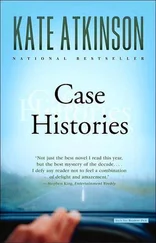Take, for example, that much beloved encyclopaedia of vulgarity, Roger’s Profanisaurus , first published in 1998. The work contains over 2,500 slang entries, cataloguing all manner of obscenities from ‘purple headed yoghurt warrior’ (penis) to ‘growling at the badger’ (cunnilingus). But there are only five clitoral colloquialisms to be found within the whole damn thing: ‘boy in the boat’, ‘bell’, ‘button’, ‘fanny flange’ and ‘sugared almond’. {1} 1 Viz, Roger’s Profanisaurus (London: John Brown, 1998), pp. 7, 10, 17, 30, 81.
Even the latest reworking of the Profanisaurus series, Hail Sweary (2013), which advertises itself as containing ‘4,000 new rude words and blasphemies’, only manages a dismal five entries on the clitoris; ‘beanis’ (a large ‘bean’ that resembles a penis), ‘clock’ (again, a large clitoris and cock hybrid), and ‘panic button’ – under which is sub-referenced ‘wail switch’ and ‘clematis’. Which means that the clitoris accounts for less than 0.15 per cent of all the entries. But it’s not like the book is pussy light. In fact, while Hail Sweary only contains thirty-seven colloquialisms for the penis and/or testes, there are a whopping 104 entries for the vulva. While this might sound like a win for #TeamCunt, most of these terms are pejorative comments on what’s referred to throughout as ‘untidy’, ‘unkempt’ or ‘messy’ vulvas. References to the labia are multiple: ‘doner meat’, ‘pig’s ears’, ‘Biggles’ scarf’. Pubic hair also features heavily: ‘ZZ Mott’, ‘gruffalo’, ‘Terry Waite’s allotment’. Allusions to fish are tediously predictable: ‘fishmonger’s dustbin’, ‘trout pocket’, ‘haddock pasty’. {2} 2 Graham Dury and others, Hail Sweary (London: Dennis Publishing, 2013), pp. 19, 40, 127.
And so on, and so on. Despite the book’s obvious obsession with the holiest of holies, the emphasis is clearly phallocentric and prioritises the pleasure the vulva gives, rather than that which it can receive. It might seem like I am picking on the Profanisaurus , but the colloquial drought around the clitoris is universal. Ignoring clitoral pleasure is woven into the very language of sex.
This chapter focuses on the Western fascination with the clitoris and the endless efforts by doctors to understand and ‘fix’ it. As female genital mutilation (FGM) continues to be a major concern across Africa, Asia and the Middle East today, it is important to remember the West’s own hand in this barbaric practice. Some of the earliest Western records describing the clitoris are Ancient Greek descriptions of FGM, allegedly carried out in Egypt. [4] Early writers such as Hippocrates and Aristotle write at some considerable length about the function of the vulva, but it’s unclear if they are describing the clitoris. Vincent Di Marino and Hubert Lepidi, Anatomic Study of the Clitoris and the Bulbo-Clitoral Organ (Cham: Springer International Publishing, 2014), p. 2.
The earliest extant evidence of FGM comes from the Greek historian and geographer Strabo (64 BC–AD 24), who claimed the Egyptians ‘raise every child that is born to circumcise the males and excise the females’. {3} 3 H. C. T. Hamilton, The Geography of Strabo (London: Bell and Sons, 1903), 17.2.5.
Though several Greek writers claimed the Egyptians circumcised women, there is very little surviving evidence from the Egyptians themselves to corroborate how they felt about the clit – they may have circumcised the clitoris, they may have left it well alone, or they may have dressed it up like a Mr Potato Head, we will just never know. [5] Finding Egyptian references to the ‘lullo-bump’ (1995) is particularly difficult. In Studies in Ancient Egyptian Anatomical Terminology (1997), James Walker lists ‘šd’ as a term for the vulva, and ‘sp.ty šd’ for ‘labia’ (meaning ‘two lips of the vulva’). He also cites the word ‘h˙nn-k3t’ in his list of anatomical terms, which he tentatively translates as ‘clitoris (?)’. (James H. Walker, Studies in Ancient Egyptian Anatomical Terminology (Wiltshire: Aris and Phillips, 1997), p. 272.) Egyptologist Dimitri Meeks cites ‘Hnn’ to mean ‘phallus’, but within his entry he makes note of ‘h˙nn-k3t’, which again is hesitatingly translated as ‘clitoris (?)’. (Dimitri Meeks, Année Lexicographique (Paris): Cybèle, 1998), p. 250.) The reason for the uncertainty and question marks is that ‘h˙nn-k3t’ could just as easily mean the head of the penis. (Erik Hornung, [The Litany of Re.] Das Buch der Anbetung des Re Im Westen, Sonnenlitanei. Nach Den Versionen des Neuen Reiches Herausgegeben Von Erik Hornung (Genève, 1975), p. 144, entry 483.) Frustrating, isn’t it? Of course, none of this means the Ancient Egyptians weren’t clit-literate, it just means the surviving evidence can’t confirm it. I would like to thank Sonja Greer for her invaluable help in finding the clitoris in Ancient Egyptian texts. She conducted detailed searches and provided numerous translations for this book. I would have been lost without her.
Galen (AD 129–216), probably the most influential of the Greek physicians, called the clitoris the ‘nymph’ and thought its function was to help keep the womb warm, like a kind of clitoral bobble hat for your ‘chuff’ (1998). {4} 4 Galen and Margaret Tallmadge May, Galen on the Usefulness of the Parts of the Body (New York: Classics of Medicine Library, 1996). Other medical writers from the Ancient World to discuss the anatomy of the ‘nymph’ were Caelius Aurelianus, Albucasis and Avicenna.
This made perfect sense to the Greeks as everyone knew that women were hot and wet and men were cold and dry. This was a belief shared by Galen’s contemporary, Soranus of Ephesus (yes, really – a gynaecologist called ‘Soranus’), who practised medicine in Alexandria in the first century. In his four-volume treatise on gynaecology, Soranus describes the anatomy of the vulva fairly accurately, and also calls the clitoris a ‘nymph… because it is hidden underneath the labia such as young brides hide under their veil’. {5} 5 Soranus and Owsei Temkin, Soranus’ Gynecology (Baltimore: Johns Hopkins Univ. Press, 1994), p. 16.
Soranus’s work gives us one of the earliest descriptions of ‘oversized’ clitorises, and the ‘treatment’ this required. Brace yourselves.
On the excessively large clitoris, which the Greeks call the ‘masculinized’ nymph [clitoris]. The presenting feature of the deformity is a large masculinized clitoris. Indeed, some assert that its flesh becomes erect just as in men and as if in search of frequent sexual intercourse. You will remedy it in the following way: With the woman in a supine position, spreading the closed legs, it is necessary to hold [the clitoris] with forceps turned to the outside so that the excess can be seen, and to cut off the tip with a scalpel, and finally, with appropriate diligence, to care for the resulting wound. {6} 6 Soranos d’Éphèse, Sorani Gynaeciorum Libri IV. De Signis Fracturarum. De Fasciis. Vita Hippocratis Secundum Soranum , ed. by Ioannes Ilberg (Lipsiae: Teubneri, 1927). (4.9), p. 370.
Evidently, Soranus’s work was highly influential as variations on this procedure start cropping up in various medical texts throughout the Classical world. [6] For a full discussion on FGM in the Ancient World, see Mary Knight, ‘Curing Cut or Ritual Mutilation? Some Remarks on the Practice of Female and Male Circumcision in Graeco-Roman Egypt’, Isis , 92.2 (2001), pp. 317–38.
Sixth-century Byzantine Greek physician Aëtius of Amida builds on Soranus’s work, describing an ‘excessive’ clitoris as being both ‘a deformity and a source of shame’. His sixteen-volume medical encyclopaedia gives the most detailed and vivid account of this awful procedure (wince warning):
Читать дальше












